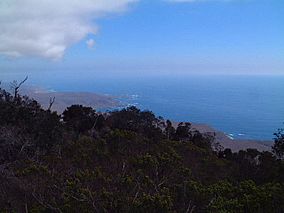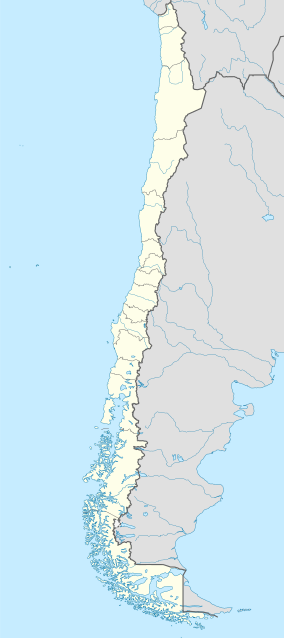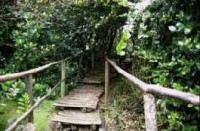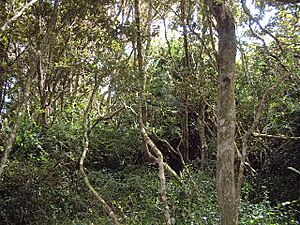Bosque de Fray Jorge National Park facts for kids
Quick facts for kids Bosque de Fray Jorge National Park |
|
|---|---|
|
IUCN Category II (National Park)
|
|

Outlook over the national park
|
|
| Location | Coquimbo Region, Chile |
| Nearest city | Ovalle |
| Area | 100 km² |
| Established | 1941 |
| Visitors | 13,205 (in 2004) |
| Governing body | Corporación Nacional Forestal |
| Official name: Humedal del río Limarí, desde Salala hasta su desembocadura | |
| Designated: | 21 July 2020 |
| Reference #: | 2424 |
Bosque de Fray Jorge National Park is a very special place in Chile. Its name means "Fray Jorge Forest" in Spanish. It is located in the Limarí Province, which is part of the Coquimbo Region. This park is so important that UNESCO has named it a biosphere reserve. This means it is a place where nature is protected, and people learn how to live with it. The park is managed by a group called CONAF.
Contents
Where is Bosque de Fray Jorge?
This national park is about 100 kilometers (62 miles) south of La Serena. It is right next to the Pacific Ocean. It is also about 30 kilometers (18 miles) west of Ovalle. Even though it is near the very dry Atacama Desert, it is part of the Chilean Coastal Range. To the south, the park is next to the Limarí River. The lower part of this river has been a protected Ramsar site since 2020. This means it is a very important wetland.
The park covers an area of 100 square kilometers (about 38 square miles). But the actual forests only cover a small part, about 4% of this area.
What Makes the Forest Special?
Bosque de Fray Jorge National Park is famous for having the northernmost Valdivian temperate rain forests. These are usually found much further south in Chile. How do they survive here, so close to a desert?
The secret is the coastal fog, called Camanchaca in Spanish. This fog hangs on the mountain slopes. It brings enough moisture to keep the trees and plants alive. These "hydrophilic" (water-loving) forests grow even though they are surrounded by dry scrublands. The area gets only about 113 millimeters (4.4 inches) of rain each year.
Scientists believe this forest is a leftover from the last glacial period. This means it is a very old forest that survived as the climate changed. Recent studies suggest the forest is even older. It might be a relic from over 20 million years ago. This was a time when the region was much wetter.
Plants and Animals
Many interesting plants grow in the national park. Some typical trees and plants include:
- Schinus latifolia
- Azara celastrina
- Lithraea venenosa
- Porlieria chilensis
- Olivillo (Aextoxicon punctatum)
There are also Epiphytes. These are plants that grow on other plants, like trees, but do not harm them. Examples are Sarmienta scandens and Griselinia scandens.
The park is home to many small animals. You might see common degus, chinchillas, and foxes. Many different kinds of birds also live here. These include the Chilean tinamou (Nothoprocta perdicaria) and the long-tailed meadowlark (Sturnella loyca).
History of the Park
The area where Fray Jorge National Park is today was found in 1627. A Franciscan priest was looking for timber because there was not much wood nearby. He "miraculously" found this forest. He brought back wood to help build part of the bell tower for the Church of San Francisco in La Serena.
The Bosque de Fray Jorge national park was officially created in 1941. It has been managed by the Chilean forest authority, CONAF, ever since. In 1977, UNESCO recognized the national park as a biosphere reserve. This helps protect its unique environment even more.
See also
 In Spanish: Parque nacional Bosque Fray Jorge para niños
In Spanish: Parque nacional Bosque Fray Jorge para niños




